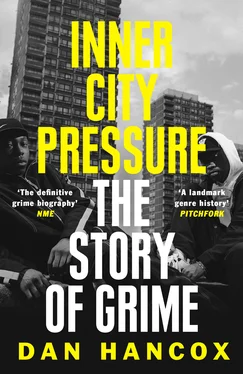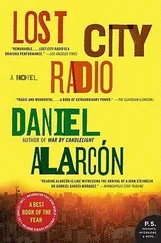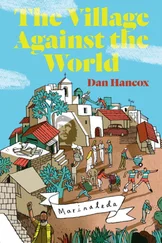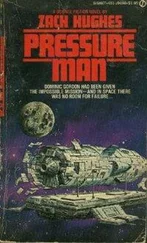The ‘problems of east London’? Social housing and social housing’s fellow traveller, poor people, who unfortunately placed ‘added pressures on the resources of the local authorities’. Instead, the regeneration had transformed the area from somewhere previously ‘isolated both physically and emotionally from the rest of London’ and placed it ‘well and truly in the mainstream of metropolitan life’.8
The LDDC spent £3.9 billion of public money on the Canary Wharf regeneration, only to seal it off from its disproportionately sick, unhappy, overcrowded, addicted, jobless and impoverished neighbours.
For those Londoners too young to remember the area before the skyscrapers of Canary Wharf, it feels like it’s always been there, with One Canada Square’s blinking top-light our city’s modern lighthouse. Canary Wharf is less than two miles from the notorious 25-storey, three-tower block Crossways Estate where Dizzee Rascal and Tinchy Stryder lived as children (‘the three flats’), and less than a mile from Langdon Park School, where the former wrote the beginnings of Boy in da Corner in music class. Interviewed in 2010 for a BBC London radio programme about ‘the best and worst of the capital’, Dizzee was asked to nominate his favourite building in London, and unhesitatingly chose One Canada Square:
‘It means the most to me, I could see it from all angles as a kid. That was the highest building I could see from my bedroom. And when I see it from south London, when I’m coming over from the Blackwall Tunnel, it always gets me excited, especially at night – it feels special. I love that and the buildings around it – you see a little mini metropolis being built up … It’s not quite as impressive as New York or Japan, but it’s ours , innit? I remember when we were little, we had a conspiracy, we thought that thing on the top of it was like aliens, and they were about to fly off – loads of little theories like that. We’d blink and think they had lasers up there.’9
It’s not a stretch to suggest that Canary Wharf was the source of grime’s unique incarnation of Afrofuturism; the African diasporic aesthetic that takes science fiction as a tool for discussing oppression and freedom – where spaceships might be a metaphor for slave ships, subverting the journey to make it one of escape, not damnation. It’s a futurism you can hear in the constant injunctions in grime to ‘push things forward’, to ‘elevate’, to make music – and to be – ‘next level’, and it dovetails with the competitive rhetoric enshrined in Canary Wharf’s giant totems to late capitalism. Contrary to American hip-hop’s rootsy rhetoric about being ‘real’ and knowing and respecting your history, grime is a year-zero sound, which – in its early days, at least – asked only what’s next, and sought to get there first.
You can hear this Afrofuturism most of all in the sonics of grime production – the stark, unfiltered minimalism of the kick drums, the interplanetary weight of the bassline, the sleek raygun zaps and zips of a synth, the way the whole edifice shines sleekly like a spacesuit. It’s the sound of the future kids have dreamed of for decades, even while grime’s lyrics describe with molecular detail the dirt of the MCs’ vividly quotidian lives; MCs who were not universe-traversing spacemen, but teenagers growing up in the poorest boroughs in the country. The real meaning of Canary Wharf, rather than its laser-shooting sci-fi potential, was not lost on Dizzee’s peers in the east London grime scene.
‘Canary Wharf is like our Statue of Liberty,’ Roll Deep’s DJ Target told the Guardian in 2005: ‘It pushes me on. It’s like all the money is there and it’s an inspiration to get your own.’
Target is now a BBC 1Xtra DJ, which might seem like a token victory for the twin myths of trickle-down economics and climb-up philosophy that Canary Wharf and Britain’s political classes so aggressively pushed. New Labour’s architect Peter Mandelson infamously defined what was ‘new’ about the party when he said, in 1998, he was ‘intensely relaxed about people getting filthy rich’. British politicians have long perpetuated fallacies about social mobility, the ‘aspiration nation’ (a favourite slogan of David Cameron when he was PM), or the £9-billion 2012 Olympics ‘inspiring a generation’ out of poverty, but there is no clearly articulated British equivalent of the American dream – for which US rap music has been such a strong shill. In the UK, the relationship is less overt than the familiar American alliance of multimillionaire ‘ghetto’ musicians and multimillionaire financiers: the kind crystallised in The 50th Law , the self-help book by 50 Cent and best-selling ‘power strategist’ author Robert Green. But it is there. For the teenage Dizzee, Canary Wharf’s blinking white light held the potential for an alien getaway, but it was also perhaps east London’s version of the green light at the end of the dock in The Great Gatsby , a symbol of ‘the orgastic future that year by year recedes before us’, the tantalising dream of escape into a brighter tomorrow.
Slimzee, perhaps grime’s greatest ever DJ, with his childhood friend Geeneus one of the founders of Rinse FM, tells me they had other dreams for the tower. ‘We always used to look up at Canary Wharf, when we were growing up, and I wanted to go up to the top and put an aerial up there.’ He pauses, amused at the obviously flawed teenage ambition. ‘But you couldn’t: it’s got that sloping pyramid roof, it wouldn’t work.’
Tinchy Stryder, who grew up in the Crossways Estate, says Canary Wharf dominated the skyline. ‘When I was growing up you could see it everywhere. We felt like, “Oh, wow, do we get to go there one day?” It felt really close, but far away at the same time; like, it wasn’t really anywhere for us to be. Everything felt fresher and cleaner than where we grew up; it felt like a different world. It felt like when you go there, you had to be on your best behaviour.’ And he was right – the paved terrain around the skyscrapers was a paradigm for what have become known as ‘POPS’, privately owned public spaces: where private security guards can ask you to leave just based on looking at you. If Detroit techno captured the metronomic industrial rhythms of the city’s car factories, grime’s sonic palette describes the dystopian scene in millennial east London: the view from the decaying tower blocks down onto the de-cluttered spaces and privatised plazas of Canary Wharf – gleaming, futuristic, and glowering with menace.
When the BBC filmed a short profile of Dizzee to be broadcast as part of the 2003 Mercury Prize TV show, they caught him looking out of the window of the Crossways Estate with a less light-hearted attitude to the second City than he would display by the end of a decade, once he’d reached a state of monied grace: ‘That is Canary Wharf,’ Dizzee explained to the camera. ‘It’s in your face. It takes the piss. There are rich people moving in now, people who work in the City. You can tell they’re not living the same way as us.’
New luxury flats and gated residential blocks were sprouting rapidly in the foothills of Canary Wharf throughout the 2000s; like Target, Dizzee was under no illusion about the lesson to be learned from Canary Wharf, malevolent or not. He was asked in the same BBC Mercury Prize interview what motivated him. He stared straight at the camera. ‘Money motivates me. I’m motivated by money.’ A year later, on the B-side to ‘Dream, Is This Real’, he summed up the ethic of the age:
We was kids, we was young, used to love having fun
Now we look up to guns, and the aim’s only one:
Make money, every day, any how, any way
Читать дальше












